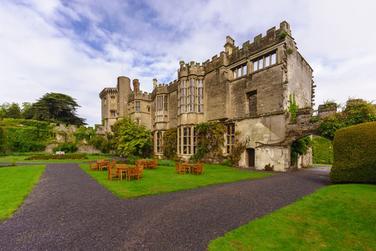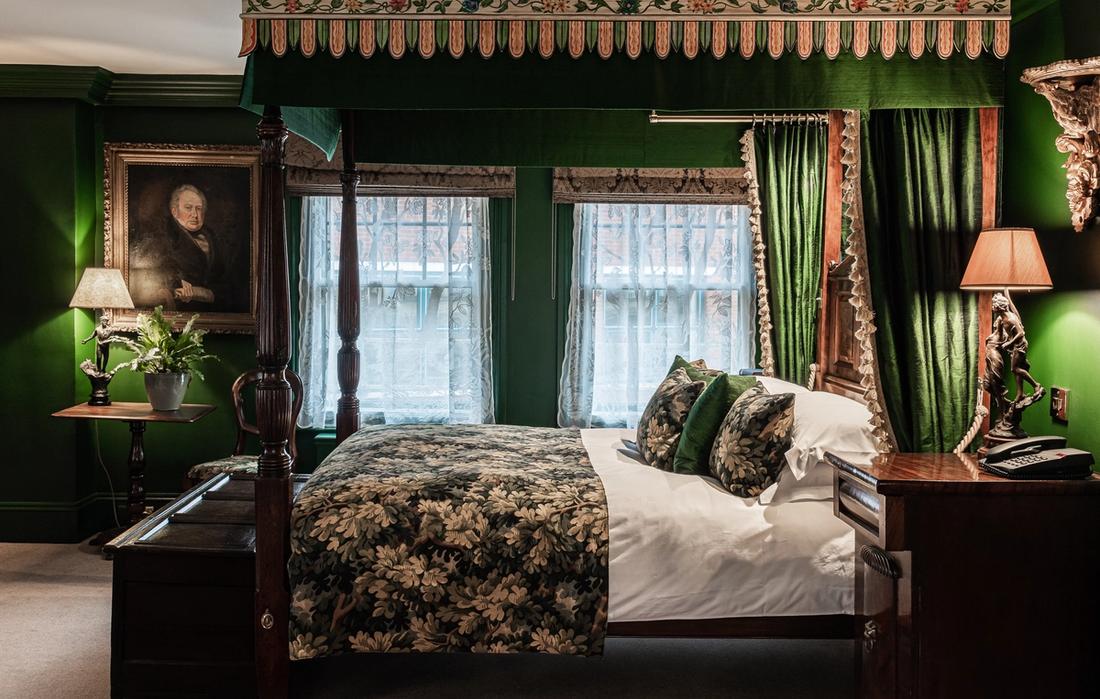The Good Hotel Guide is the leading independent guide to hotels in Great Britain & Ireland, and also covers parts of Continental Europe. The Guide was first published in 1978. It is written for the reader seeking impartial advice on finding a good place to stay. Hotels cannot buy their way into the Guide. The editors and inspectors do not accept free hospitality on their anonymous visits to hotels. All hotels in the Guide receive a free basic listing. A fee is charged for a full web entry.
The Good Hotel Guide
About Us
Independent
Recommended
Trusted
Independent
Recommended
Trusted

Hotels with royal connections and rich histories
All blog posts
5 minutes
11 May 2023
Hotels with royal connections and rich histories
All blog posts
5 minutes
11 May 2023
By Rose Shepherd
With British history and monarchy on our minds, this month we present our pick of some of our favourite Guide hotels with a colourful past – places that abound in stories, original features, several with royal connections, some set in acres of landscaped parkland and pleasure grounds.
An Elizabethan mansion built around a medieval pele tower and surrounded by pleasure grounds with double herbaceous border, topiary, ponds and woodland, the Grade I listed Askham Hall, near Penrith, is the family home of the Lowthers, Earls of Lonsdale. Among guest bedrooms, the Admiral’s Room, within the tower, has an antique four-poster and views to the east and south, over the gardens to the River Lowther, and to St Peter’s church. This was where the late Prince Philip, Duke of Edinburgh, would sleep when visiting. On occasion, the Queen accompanied him, and the Duke enjoyed competing in the annual Lowther Horse Carriage Driving Trials.
The childhood home of Anne Boleyn, 14th-century, moated Hever Castle, near Edenbridge, Kent, was close to ruin when William Waldorf Astor bought it in 1901 and set about recreating the country residence of a Tudor courtier. The Great Hall, gatehouse, walls and towers are all original, but it was Astor who restored the rich, atmospheric interiors, and commissioned a ‘Tudor Village’ and pleasure gardens, including the 38-acre lake. The 27 B&B rooms in the Edwardian Astor and Anne Boleyn wings must be booked well in advance. The Edward VII suite has a 7ft Romanesque pillared bed, views of an apple orchard through leaded windows. Breakfast is served in an oak-panelled dining room, and guests have access to both castle and gardens.
In their happier times Henry VIII visited magnificent Thornbury Castle, in Thornbury, Gloucestershire, with Anne Boleyn – having commanded the execution of the unfortunate owner, Edward Stafford, 3rd Duke of Buckingham, for treason, as was his way. A centuries-long work in progress, the castle was restored in 1850 by the renowned Victorian architect Anthony Salvin. Now home to a Relais & Château hotel and fine-dining restaurant, it stands in 15-acre grounds with rose garden, privy garden and labyrinth. Stunning bed chambers are furnished with antiques and original features. The Catherine of Aragon tower suite, approached by a stone spiral staircase, has Tudor furnishings, an ornate four-poster, silk wall hangings.
Built to defend our shores, Star Castle in St Mary’s, Isles of Scilly, is an Elizabethan artillery castle within fortifying star-shaped walls. There are three guard rooms for single use on the ramparts, one with its own boot room. Castle rooms have modern comforts and original features. Some are sea-facing, so you can watch for invading armadas. Contemporary annexe rooms have garden access or a veranda. A dining room has beams and exposed stone. The Dungeon Bar is just that, enclosed by impregnable stone walls, a place where prisoners languished, and where you might take lunch or drink cask ales.
In 1377 an inn named The White Hart stood on the site of what is now the Grade II* listed Lygon Arms in Broadway, Worcestershire, but the inscription over the front door of the present Cotswold stone reads ‘John Trevis, 1620’. In the Civil War, Charles I rallied his supporters here, and he is commemorated in an oak-panelled four-poster suite, with his coat of arms on the fireplace. Oliver Cromwell stayed in his turn, and a copy of his ‘warts and all’ portrait hangs in a private meetings space. The ground floor is a labyrinth of snugs and lounges, with inglenooks and beams. Eat well in the relaxed ambience of the neo-Jacobean barrel-vaulted Grill, with 17th-century minstrels’ gallery, adorned with gilt-framed portraits.
Just 40 miles from London, in the Vale of Aylesbury, Hartwell was the seat of William Peveral, son of William the Conqueror, though Hartwell House as we see it today, within a picturesque 18th-century landscape, is Jacobean, remodelled in the Georgian era, with plasterwork by Giovanni Bagutti and the Atari brothers. Louis XVIII, Queen Marie-Joséphine and their court in exile, took up residence for five years and fairly trashed the place, before he was restored to the throne in 1814. In the care of the National Trust, the hotel has opulent interiors, replete with fine antiques, busts, china and important paintings, including portraits by Lely, Reynolds and Gainsborough. Dress smartly to dine in a Soane-style dining room after roaming the grounds, discovering temples, obelisk, statuary, a part of old Kew Bridge spanning a lake.
Another property in the care of the National Trust, Bodysgallen Hall in Llandudno, Conwy, is an Elizabethan mansion in 200 acres of parkland with ravishing views to Snowdonia. It is thought to have begun life as a watchtower in the 13th-century, when Conwy Castle was being built, before Richard Mostyn, High Sheriff of Caernarfonshire, took up residence, and it would evolve over centuries into a grand country house with fantastic Arts and Crafts gardens. Main house bedrooms are presented in classic country house style. The Vaughan Suite has a four-poster bed. Vegans and omnivores are well cared for in a characterful dining room with leaded, stained-glass windows.
Student protests are nothing new. Prestonfield, at the foot of Arthur’s Seat in Edinburgh, was the work of William Bruce, ‘king’s architect’ to Charles II, replacing an earlier house burnt out in anti-Catholic riots. It stands in gardens and wooded parkland patrolled by peacocks. The interiors are full-on theatre, with antiques and paintings. The Lord Provost Suite has an antique mahogany four-poster hung with red and gold velvets. The Benjamin Franklin Suite, which recalls a stay by one of America’s founding fathers, has a sitting room and guest bedroom lined in Venetian glass mosaic, walls of trompe l’oeil drapery. If a stay or dinner is beyond your budget, you can drop in for a historic afternoon tea by the log fire or in rose-filled gardens.
See our full Editor’s Choice selection of historic hotels


